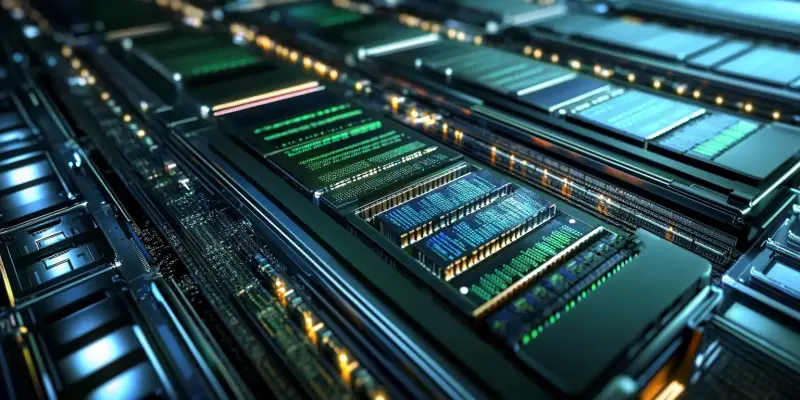The technology landscape is rapidly shifting, with data center GPUs taking center stage in driving market dynamics. This change is occurring against a backdrop of complex geopolitical issues and evolving fiscal policies. As we delve deeper into recent trends and performance metrics sourced from Jon Peddie Research, we see an intricate dance of growth, decline, and resilience within the GPU and CPU sectors.
GPU Market Dynamics
Increasing Data Center GPU Demand
During Q4 2024, worldwide GPU shipments saw a notable increase of 4.4% compared to the previous quarter, reaching an impressive 76.9 million units. This upward trend was largely driven by the burgeoning demand for data center GPUs, highlighting their pivotal role in supporting advanced computational tasks and AI-driven initiatives. Data center GPU shipments specifically experienced a robust quarter-over-quarter growth of 13.8%, amplifying their significance in the broader market landscape. This growth underscores the critical importance of powerful GPUs in meeting the ever-growing data processing needs of modern enterprises.
However, it’s a mixed picture when examining desktop GPU shipments, which declined by 5.4% on a year-on-year basis. This downward trajectory can be attributed to various factors, including market saturation and shifts in consumer preferences towards alternative computing solutions. On a broader scale, the overall GPU market experienced a slight year-on-year decline of 0.9%, influenced by a range of geopolitical challenges, such as tariffs imposed against several countries. Despite these hurdles, the data center GPU segment has demonstrated its resilience and capacity for growth, positioning itself as a cornerstone of the technology market.
Market Share Shifts
NVIDIA continues to be the largest player in the GPU market, but recent figures show a 3.3% reduction in its market share within the PC graphics sector, now accounting for 15% of shipments. This decline is a stark reminder of the competitive pressures and supply chain complexities that even industry giants face. Interestingly, both Intel and AMD have made marginal gains in their market shares, with increases of 1.9% and 1.3%, respectively. These shifts signal an increasingly competitive landscape where no single entity can afford to rest on its laurels.
NVIDIA’s inability to meet the growing demand for its GPUs has partially hindered market growth, with the upcoming tariffs expected to further influence market dynamics in 2025. These tariffs could exacerbate existing supply chain issues and impact pricing strategies. Despite a strong backlog of orders, NVIDIA and other key players must navigate these challenges carefully to sustain their market positions and drive future growth. The anticipation of these tariffs underscores the importance of geopolitical stability in maintaining healthy supply chains and market equilibrium.
CPU Market Trends
Notebook and Desktop CPU Shares
The CPU market has exhibited its own set of trends, distinct yet interconnected with the GPU landscape. Notably, the market share of notebook CPUs saw a slight decrease of 1%, dropping from 70% to 69%. This marginal decline reflects a broader stabilization in the notebook segment, which has experienced explosive growth during the pandemic era but now faces normalization. In contrast, desktop CPUs have maintained a steady 31% market share. This stability presents a narrative of endurance, even as consumer and enterprise preferences evolve.
Overall client market CPU shipments reached 71.7 million units in Q4 2024, demonstrating a notable 4.6% year-over-year increase and an impressive 7.8% growth from the previous quarter. These figures underscore the sustained demand for computing power, driven by ongoing digital transformation efforts across various sectors. As businesses and individuals continue to embrace hybrid work models and cloud-based solutions, the need for robust and efficient CPUs remains high. This demand is expected to persist, propelling the CPU market forward amidst shifting economic conditions.
Market Performance and Projections
The technology landscape is undergoing a rapid transformation, with data center GPUs becoming key drivers of market dynamics. This significant shift is happening amidst complex geopolitical challenges and changing fiscal policies. When we examine the latest trends and performance metrics sourced from Jon Peddie Research, a detailed picture emerges. The data reveals an intricate interplay of growth, decline, and resilience in both the GPU and CPU sectors.
Data center GPUs are now at the forefront, playing a pivotal role in various applications ranging from artificial intelligence to high-performance computing. Their increasing importance is evident as companies and governments navigate the complexities of a global tech industry impacted by political and economic uncertainties. The performance data illustrates not just successes but also the hurdles faced by these sectors. It’s a delicate balance, showcasing advancements and setbacks that paint a broader picture of the evolving technology market.

